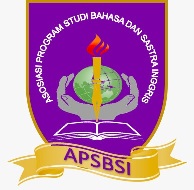Error Analysis on the Use of Prepositions in Students’ Writing (A Case Study of the Eleventh Grade Students of SMA Negeri 9 Semarang in the Academic Year of 2014/2015)
Abstract
The focus of this study is error analysis on the use of prepositions in students’ writing made by the eleventh grade students of SMA Negeri 9 Semarang. This study was conducted to find out the students’ dominant errors on the use of prepositions in their writings and to explain how students use prepositions in their writings. This study was categorized into descriptive qualitative research. The population of this study was the eleventh grade students of SMA Negeri 9 Semarang in the academic year of 2014/2015. The population was 252 students and the writer chose 72 students from two classes consist of class XI IPA 3 and XI IPA 5 as the subjects. The writer used purposed random sampling because the population was homogenous. The data was analyzed using error analysis method. The result of data analysis showed that from 1002 prepositions found in 72 students’ writing. There were 117 incorrect preposition usage or 11.68%. The dominant error was the use of preposition of place which was 66.67% or 78 errors. However, the students were able to use prepositions correctly because in general they could use the appropriate prepositions in their writing. The writer saw that some of students were still confused in choosing the appropriate prepositions. Some of them knew the function of prepositions but they overgeneralized the information from target language in every structure of language they found. They also tried to combine information from their native language (Indonesian) and second language they are learning (English). In general, those errors were mostly caused by interlingual transfer. The writer hopes that the teacher could be aware of the importance of media to transfer information about preposition effectively and efficiently. The writer also hopes the government and syllabus developer could understand the importance of preposition as the part of grammar in English. In addition, they could allocate more time and portion to include preposition as the important material for the students.References
Brown, H. Douglas. 2000. Principles of Language Learning and Teaching. New York: Longman.
Dermibas, M. N. 2013. Performance Differences between ELT Freshmen’s Receptive and Productive Skills. The Journal of Language and Linguistic Studies, 9(1), 107-127. Available at: http://www.jlls.org/vol9no1/107-127.pdf [accessed on 11/03/15]
Ellis, Rod. 1994. The Study of Second Language Acquisition. New York: Oxford University Press.
Lorincz, Kristen and Rebekah Gordon. 2012. Difficulties in Learning Prepositions and Possible Solutions. Linguistic Portofolios: Vol. 1, Article 14. Available at: http://repository.stcloudstate.edu/stcloud_ling/vol1/iss1/14 [accessed on 17/04/13]
Ningsih, Rahmawati. 2004. Error Analysis in the Students’ Writing (A Case Study with the Second Year Students of SLTPN 239 Tanjung Barat). Final Project: Syarif Hidayatullah State Islamic University Jakarta.
Pendidikan Bahasa Inggris: The Definition of Writing According to Some Experts. Available at: http://www.pendidikanbahasainggris.com/2013/06/the-definition-of-writing-according-to.html. [Accessed on 11/03/2015]
Seaton, Anne and Y.H. Mew. 2007. Basic English Grammar for English Language Learner. United States: Saddleback Educational Publishing.
Sugiyono. 2009. Metode Penelitian Kuantitatif, Kualitaif dan R&D. Bandung: ALFABETA.


_.jpg)
_.jpg)




